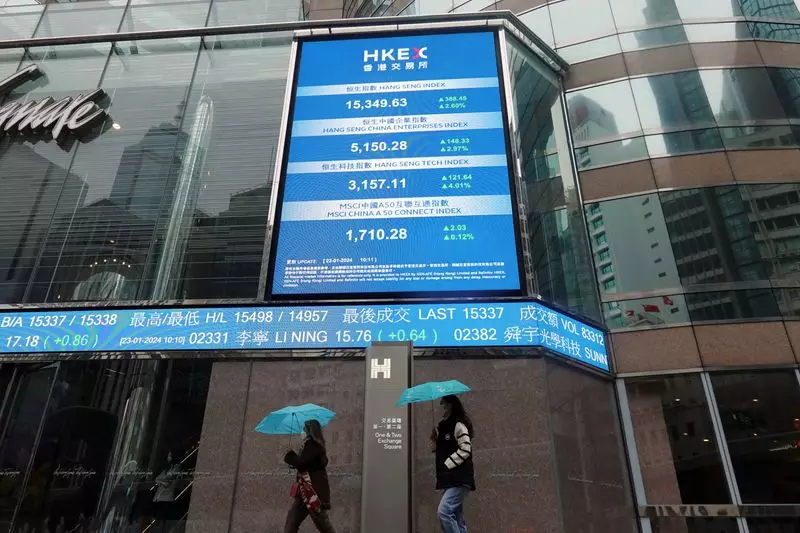As the global financial landscape becomes increasingly intricate, Asian markets appear poised for a challenging day ahead, particularly on the following Monday. With rising U.S. bond yields, a strengthening dollar, and fluctuating sentiments on Wall Street, the current economic climate raises significant questions for investors considering local assets. Fed Chair Jerome Powell’s recent assurances regarding the central bank’s stance on interest rates have not only reverberated in the United States but have also sent ripples through international markets.
The Impact of Rising U.S. Yields
The latest economic indicators revealed that the yield on the 10-year U.S. Treasury bond surged to 4.50%, a level not seen in over five months. This upward trend in yields usually signals investor confidence in the strength of the U.S. economy, but it simultaneously casts a shadow on equity markets. A particularly stark representation of this reaction was observed on Wall Street, where the Nasdaq experienced a notable decline of over 2%, marking its fourth consecutive day of losses. Such a streak had not occurred since April, underscoring the increasing volatility in technology stocks and broader market sectors.
Meanwhile, the MSCI World equity index mirrored this downward trend, also reflecting four straight days of losses, the longest losing streak since early September. These indicators are crucial, as they highlight not just localized concerns but suggest a wider pessimism permeating the global market, affecting investors’ risk appetites across different regions, notably in Asia.
Compounding the challenges facing emerging markets is an extraordinary rise in the value of the U.S. dollar, which has recently soared to its highest levels in over a year. The dollar index’s 1.6% increase last week is indicative of a robust dollar rally fueled by solid economic data emerging from the U.S. This trend causes added complications for Asian exporters and economy-sensitive assets that typically struggle in a strong dollar environment.
Goldman Sachs’s emerging market financial conditions index reached a three-and-a-half-month peak, further exemplifying the difficulties faced by investors in these markets. With emerging markets now witnessing five consecutive weeks of fund outflows, particularly in their bond sectors, there is a palpable sense of unease amongst market participants. The sudden halt in fund flows suggests a broader retreat from riskier assets as global uncertainties persist.
Turning our focus toward Asia, Monday’s economic calendar appears relatively light, yet several key data points are set to emerge. Noteworthy reports include New Zealand’s producer prices and Singapore’s non-oil trade figures, which will provide insight into regional economic health. Additionally, Japan’s machinery orders and earnings reports from Mitsubishi UFJ (MUFG) are anticipated to attract attention from investors seeking signals of growth.
In particular, Thailand’s GDP data is closely watched, with economists predicting an acceleration in growth from 2.3% to 2.6% on an annualized basis. Such growth would mark the fastest rate in one and a half years for the country, offering a potential beacon of hope for the region amidst broader economic uncertainties. The Thai baht has remained resilient against the dollar this year, leading some analysts to forecast minimal easing by the Bank of Thailand in the foreseeable future.
Geopolitical Tensions: U.S.-China Relations
As Asia navigates these economic dynamics, geopolitical tensions persist, notably between the U.S. and China. Recent statements from Chinese President Xi Jinping to President Biden highlighted unresolved issues such as Taiwan and human rights—points designated as “red lines.” These discussions may stymie market momentum, particularly in sectors sensitive to international relations, reminding investors that not only economic factors but also geopolitical stability plays a crucial role in market performances.
Asian markets on the upcoming Monday face a confluence of pressures from rising U.S. bond yields, a strengthening dollar, and socio-political tensions that could impact trading sentiments. While certain economic indicators from the region, like Thailand’s anticipated growth, offer some optimism, the overall landscape suggests that investors may need to exercise caution in the weeks to come. As the dust settles and new data emerges, continued vigilance and strategic decision-making will be essential for successfully navigating these turbulent economic waters.

